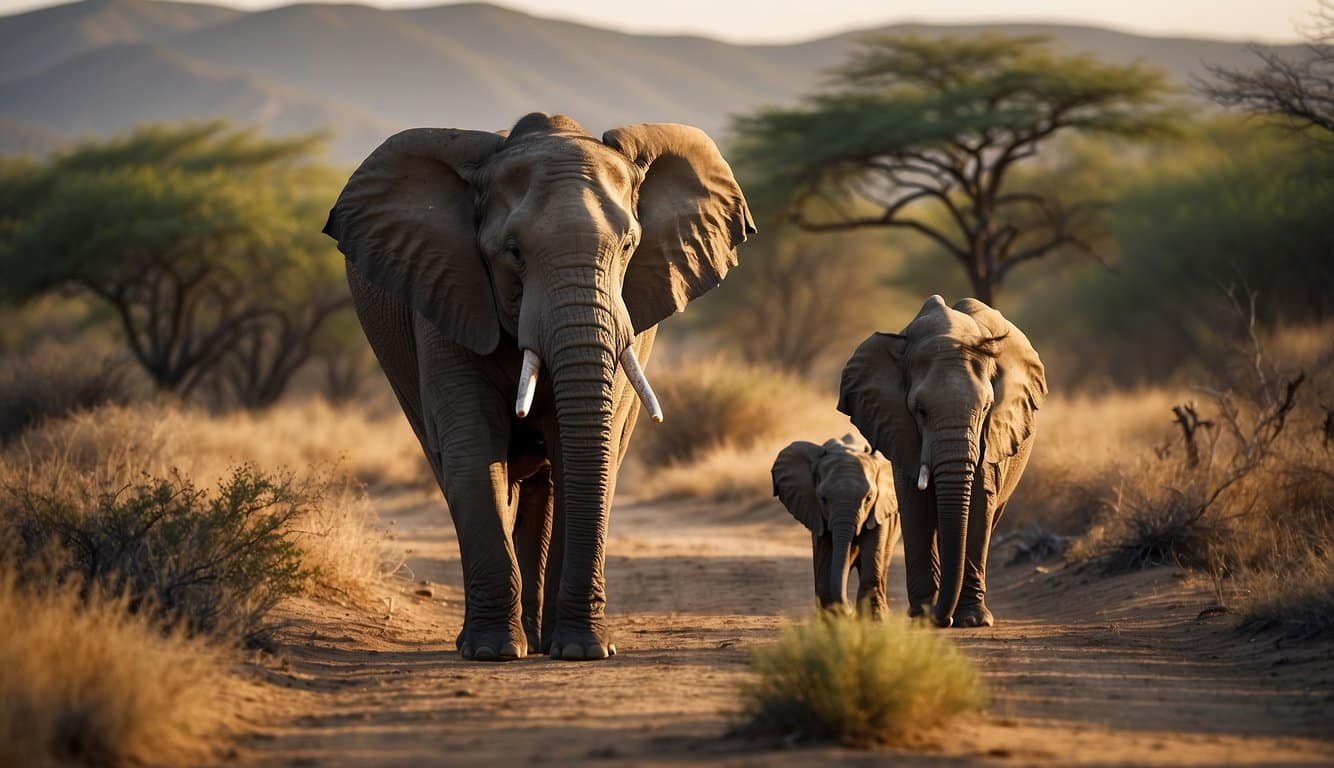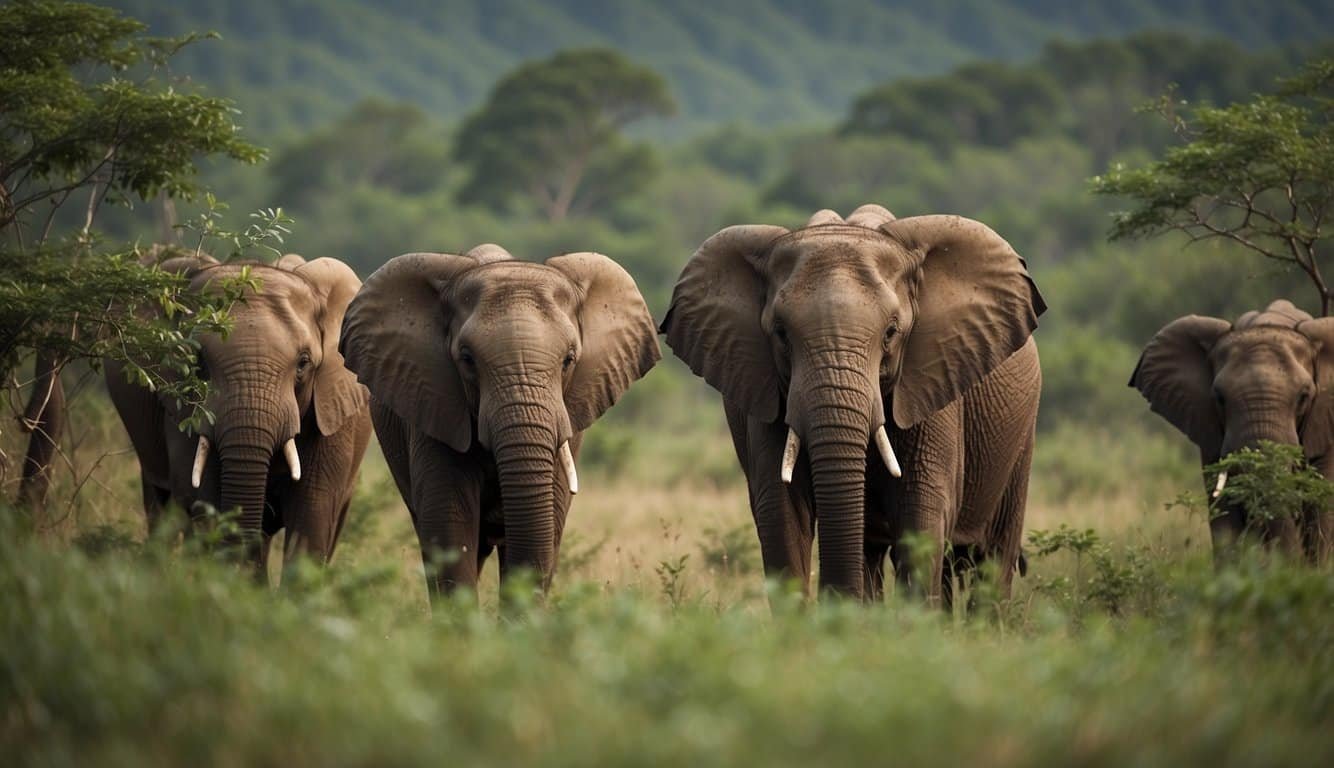Elephant Extinction Overview
Elephant extinction is a critical issue, affecting ecosystems, economies, and biodiversity. This section examines the role elephants play in the environment, the concerning trend of their populations, and the gap between different elephant species.
Significance of Elephants to Ecosystems
Elephants are often considered ecosystem engineers. In Africa, they create clearing for other species, disperse seeds vast distances, and help maintain the savanna and forest ecosystems. Their large-scale movements and feeding habits significantly shape their habitats, which support a myriad of other species.
State of Elephant Populations
African elephants are now listed as endangered, while the African forest elephant is classified as critically endangered due to declining numbers. Poaching for ivory, habitat fragmentation, and human-elephant conflicts are significant threats leading to their population decline. Conservation efforts are underway, however, the fragmented nature of populations and pressure on limited habitats are persistent challenges.
Recognizing Different Elephant Species
Recent genetic studies have confirmed that African elephants are divided into two distinct species: the savanna elephant and the forest elephant. While both are native to Africa and face similar threats, they differ in their habitats and certain physical features. The savanna elephants are larger and have more curved tusks, whereas the forest elephants are smaller and have straighter tusks. Recognition of these species is vital for targeted conservation strategies.
Threats to Survival

The majestic elephants of Africa are facing a few dire challenges that jeopardize their existence. These range from the ongoing poaching for ivory to the loss of their natural habitats, which are critical for their survival.
Poaching and Ivory Trade
Poaching for ivory remains a most pressing threat to elephant populations. Despite international bans, there is still a persistent illegal ivory trade, driven by high demand, primarily in Asia. This has led to a steep decline in elephant numbers as poachers continue to kill these magnificent creatures.
Habitat Destruction and Fragmentation
Elephants require large territories to thrive, but their living space is shrinking due to habitat destruction and fragmentation. Agriculture, urbanization, and infrastructure development carve up the wild lands, leaving elephants with insufficient room to roam. Habitat loss not only affects their food supply but also their migratory patterns.
Human-Elephant Conflict
Where elephants and humans overlap, conflict ensues. As their habitat decreases, elephants often wander into human settlements searching for food, leading to conflict. These encounters can result in the destruction of crops, property, and in some severe cases, loss of human lives, prompting retaliatory killings of elephants.
Conservation Efforts

The urgent plight of elephants—majestic creatures that are on the brink of extinction—has led to significant global conservation efforts. These efforts focus on a combination of legal frameworks, community engagement, and scientific initiatives to ensure these animals can thrive in the wild.
Legal and Policy Framework
The international trade in elephant ivory is largely regulated by the Convention on International Trade in Endangered Species of Wild Fauna and Flora (CITES), which works to prevent species from being endangered due to international trade. Countries have collaborated to strengthen these regulations and impose stricter penalties for poachers. Several nations in Africa and Asia have also established various domestic policies creating protected areas where elephants can live undisturbed.
Community Involvement and Education
Elephant conservation is not just a job for policymakers and scientists. The involvement of local communities surrounding elephant habitats is critical. These communities often suffer from crop damage and other conflicts with wildlife, so education programs are crucial to fostering coexistence. Community-based tourism initiatives offer a source of income that incentivizes locals to participate in elephant conservation, turning wildlife into an economic asset rather than a threat.
Conservation and Research Initiatives
Organizations like the World Wide Fund for Nature (WWF) spearhead conservation and research initiatives aimed at understanding elephant behavior and developing strategies for their conservation. They also support anti-poaching measures and promote international cooperation to combat poaching networks. Increasingly, conservation actions include innovative technologies for tracking elephants and detecting illegal activities in real-time.

